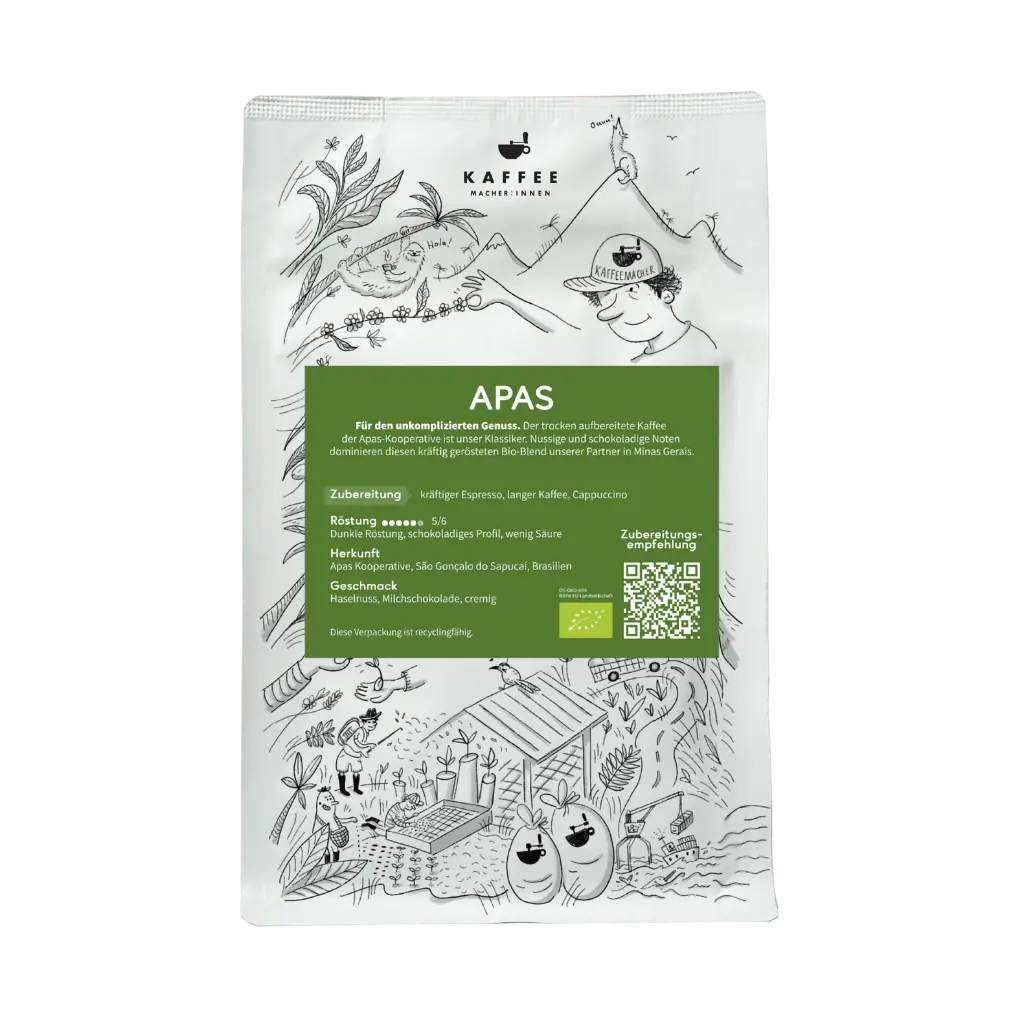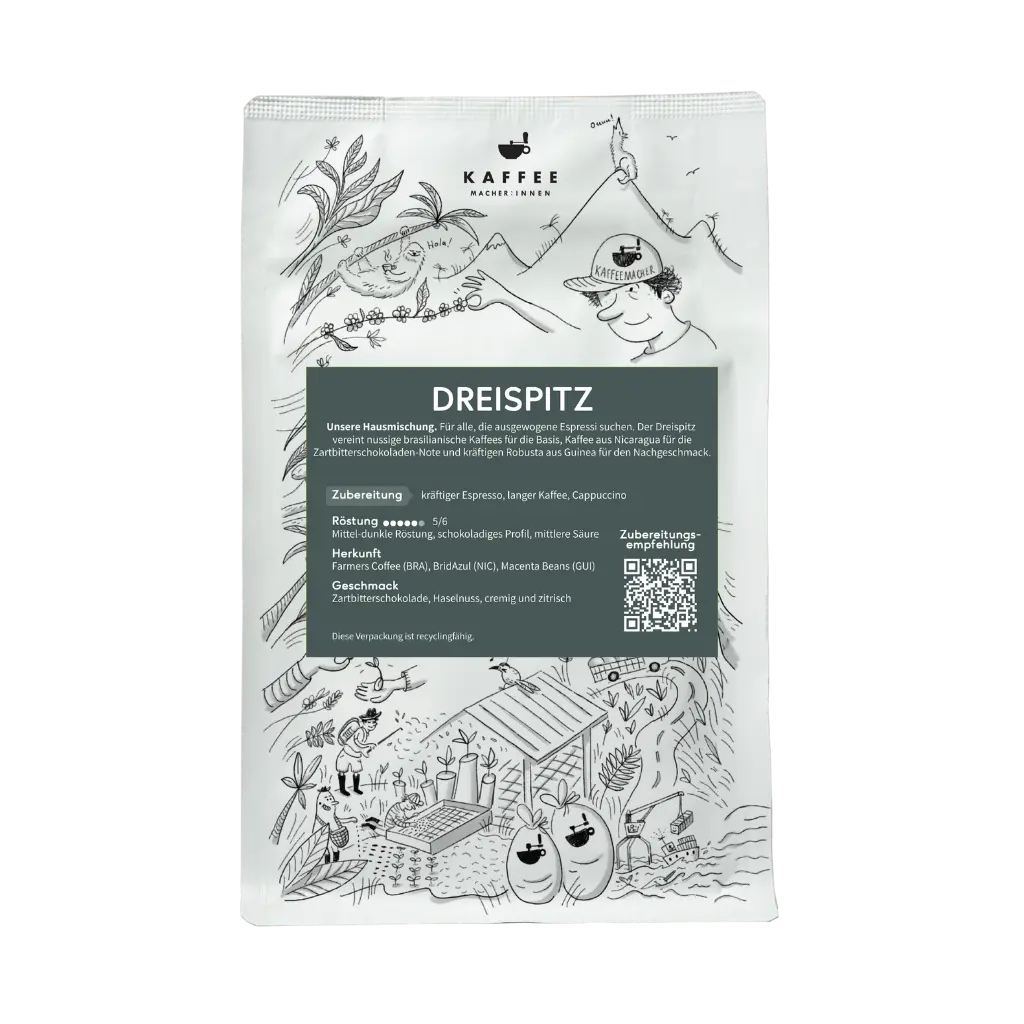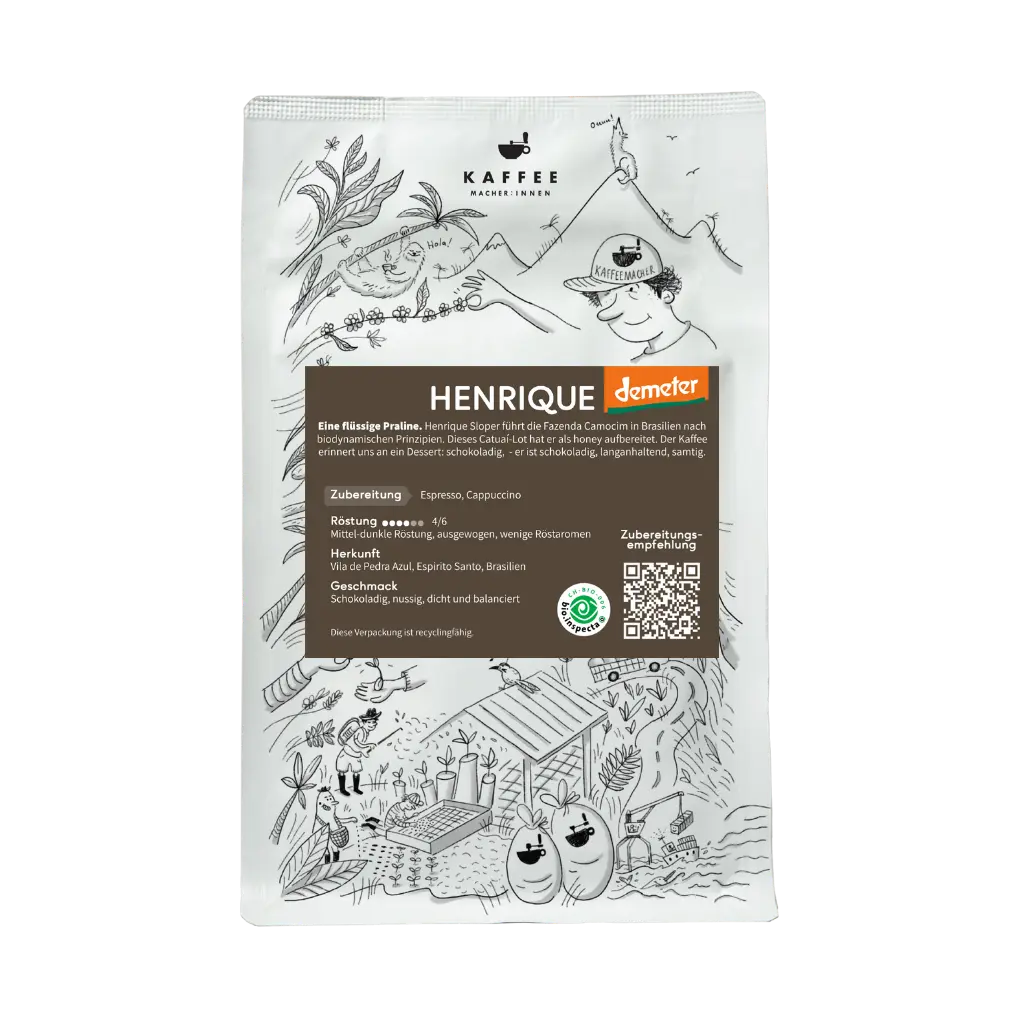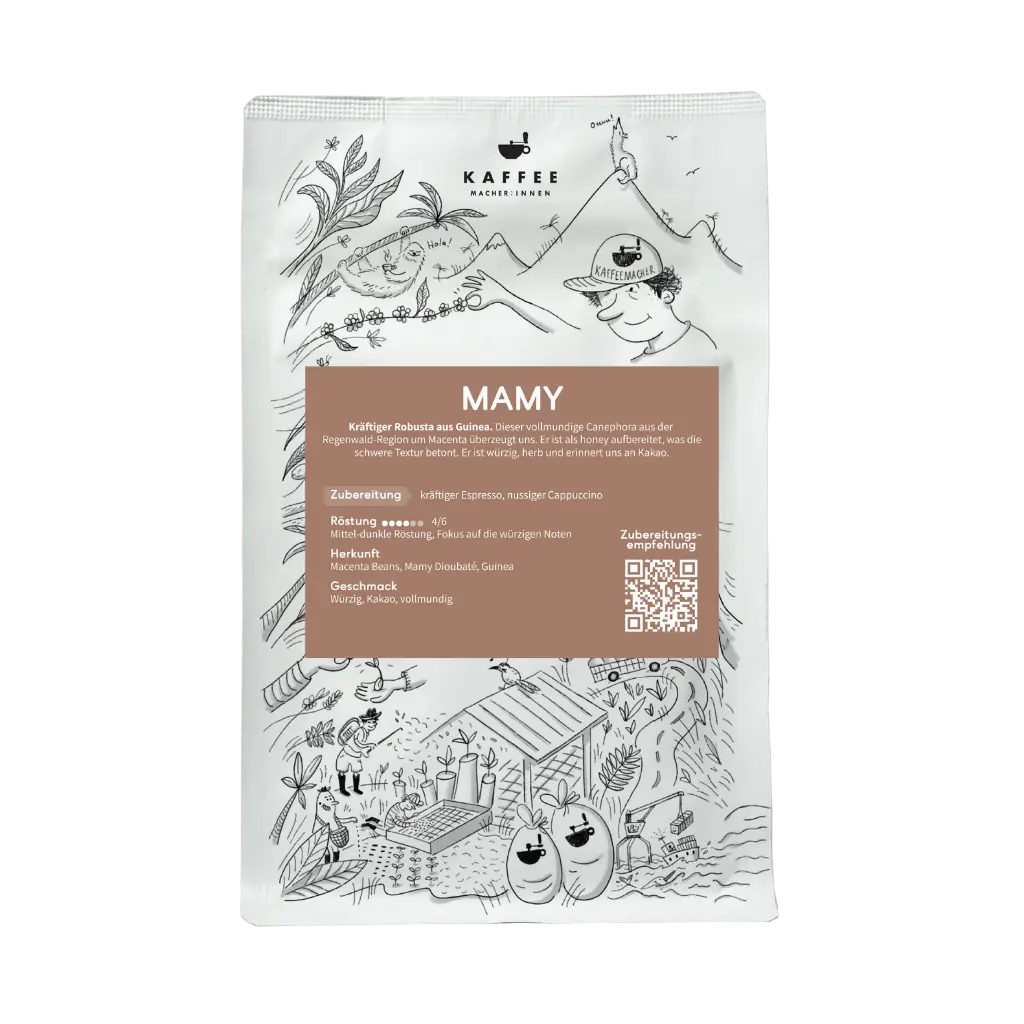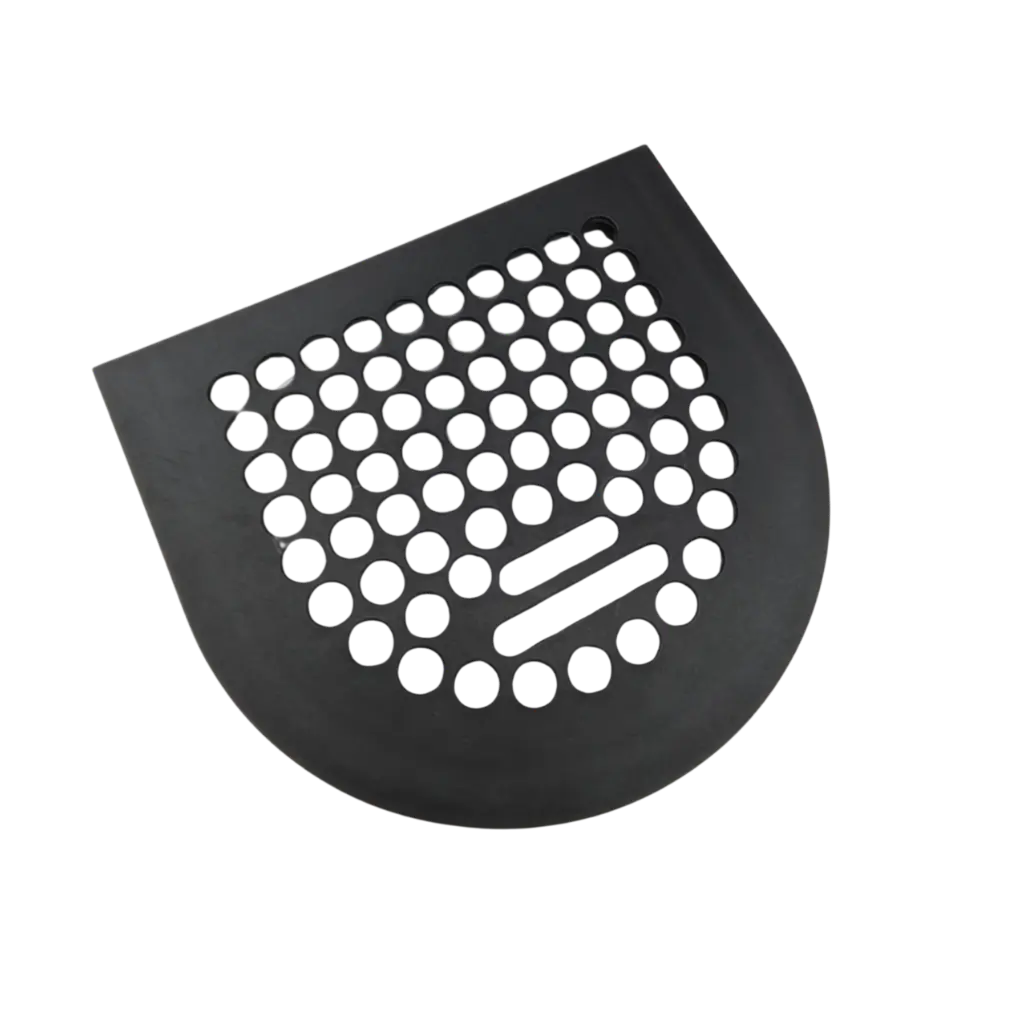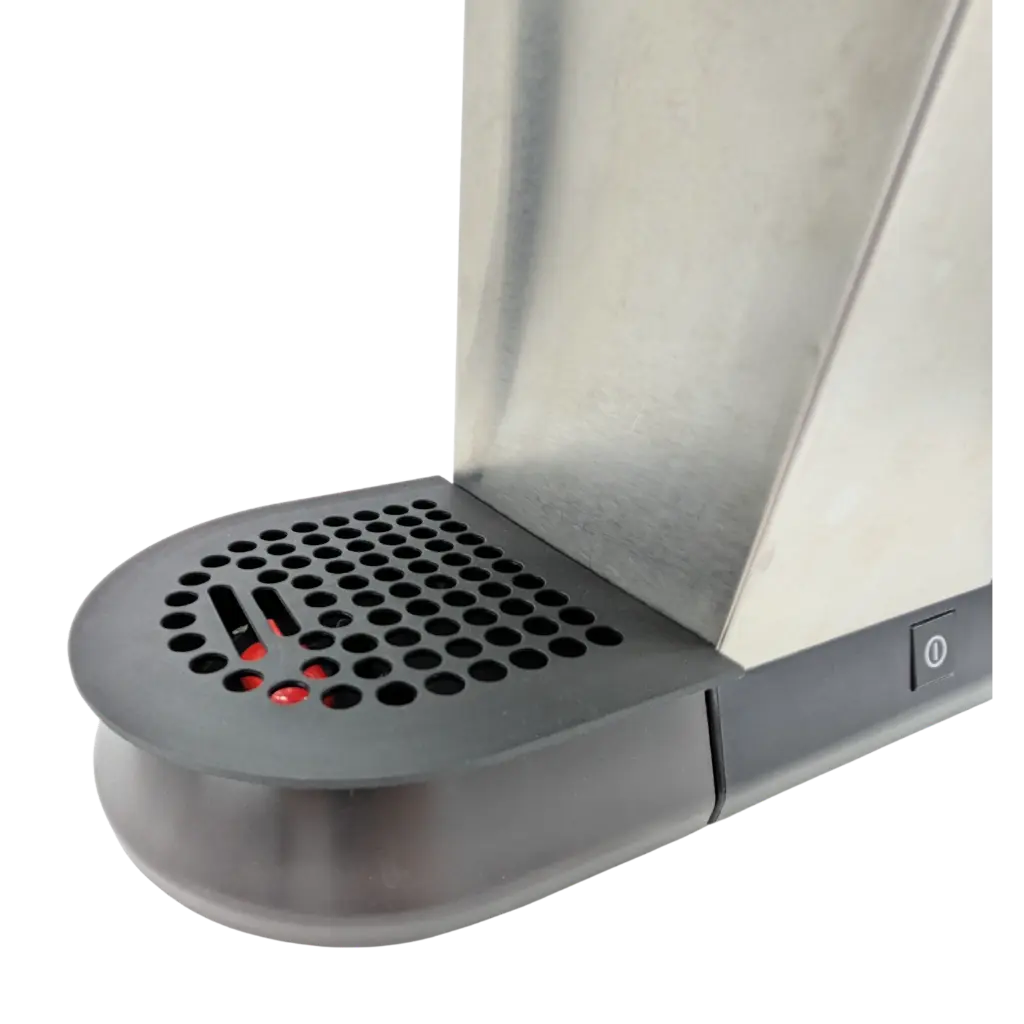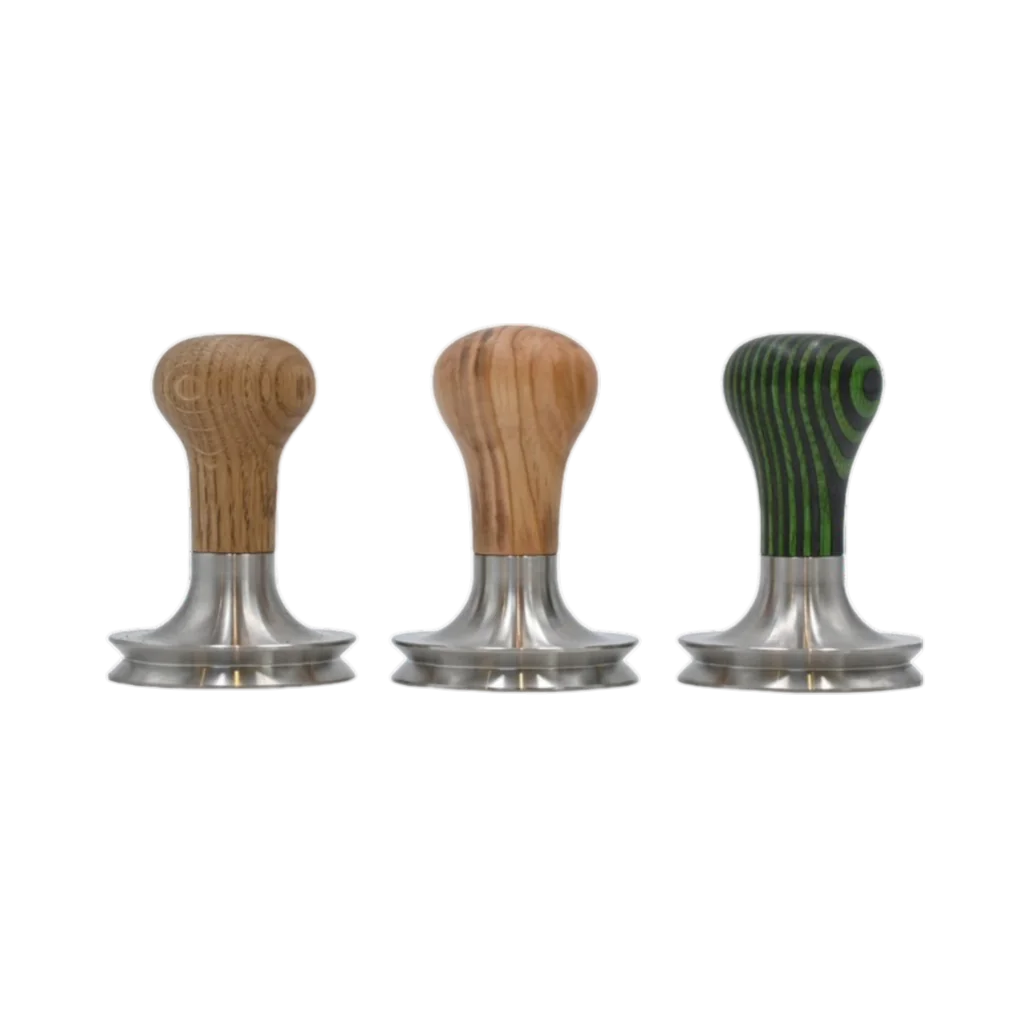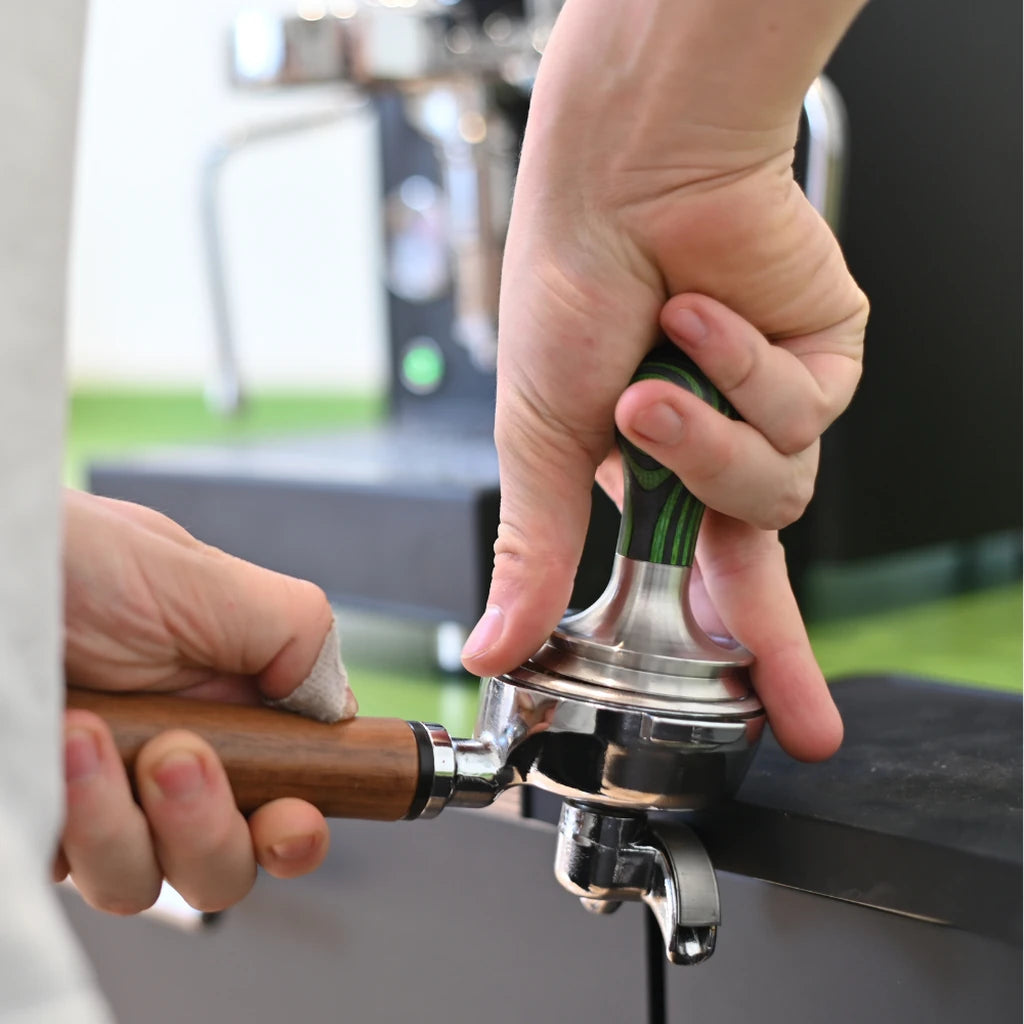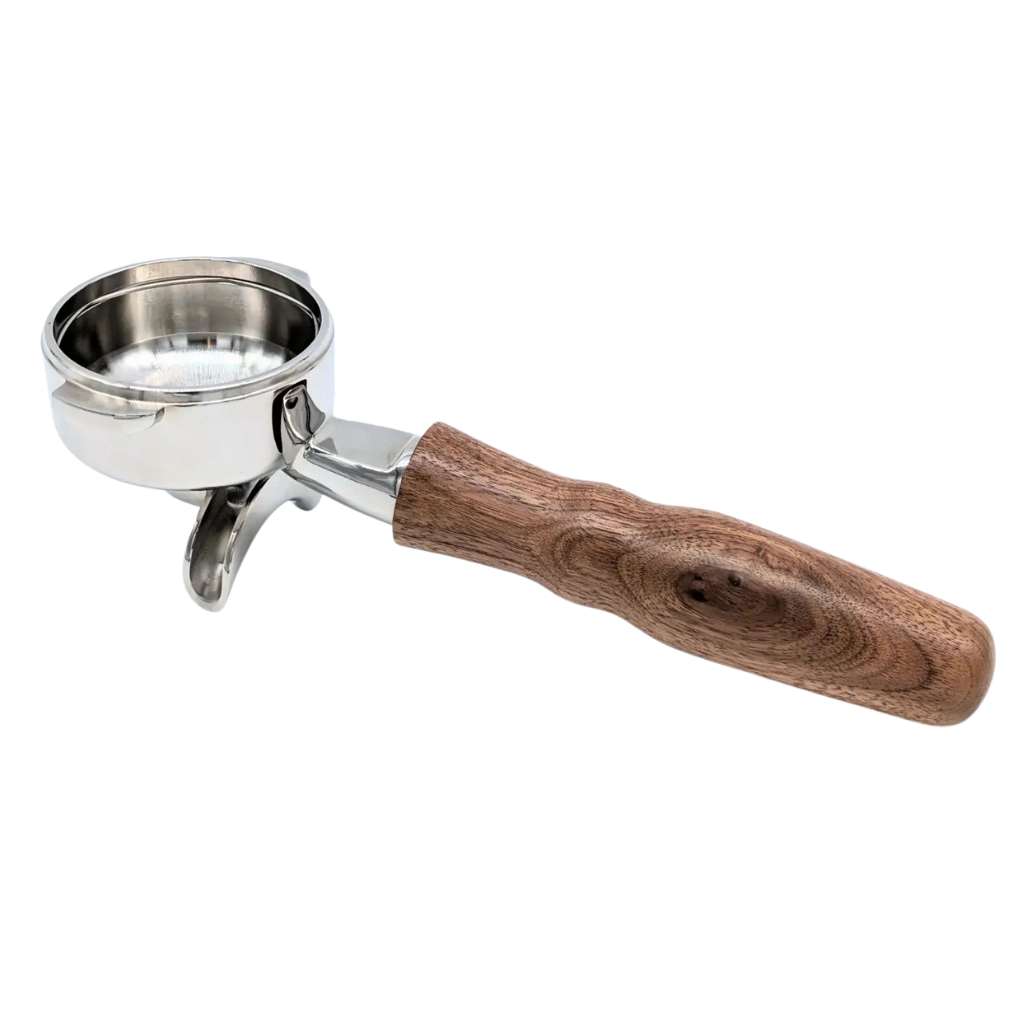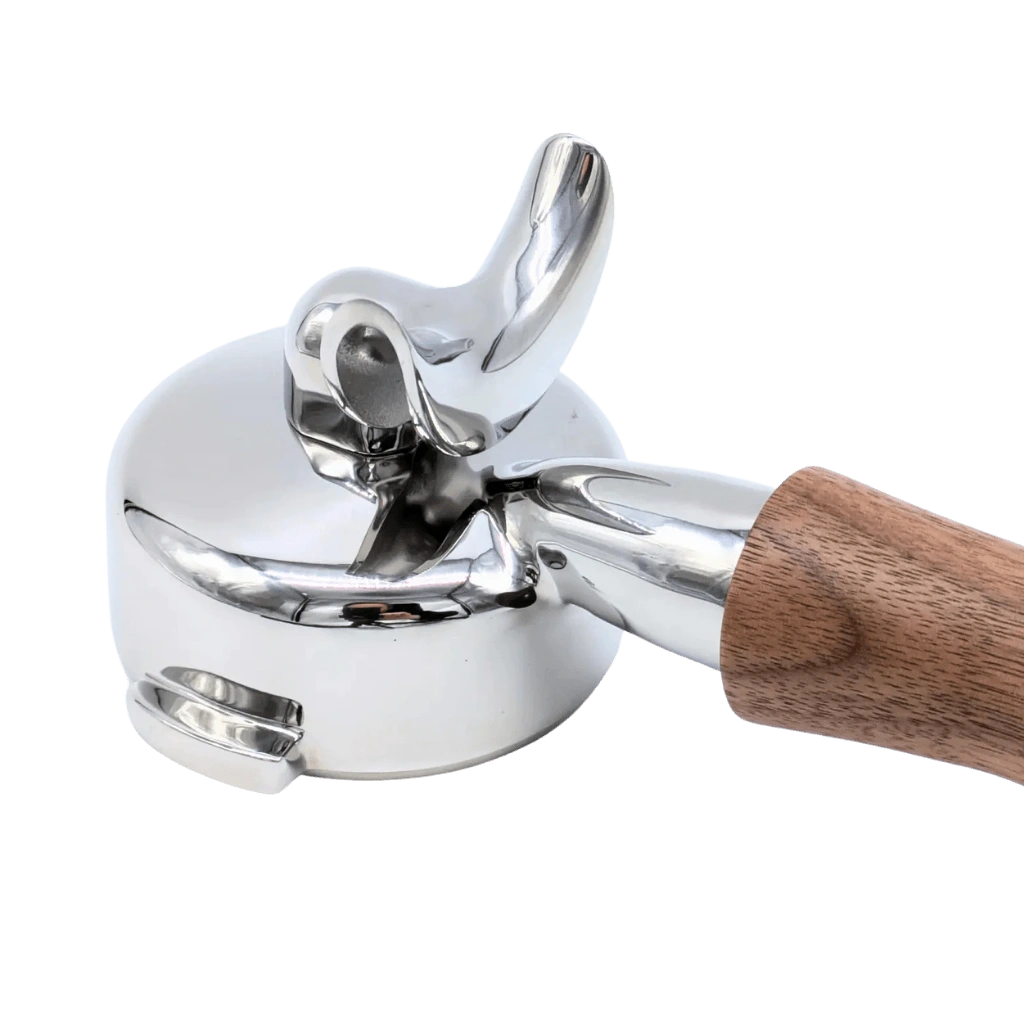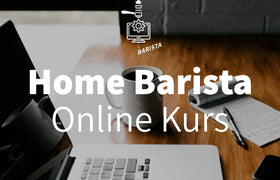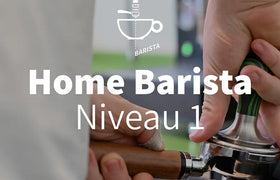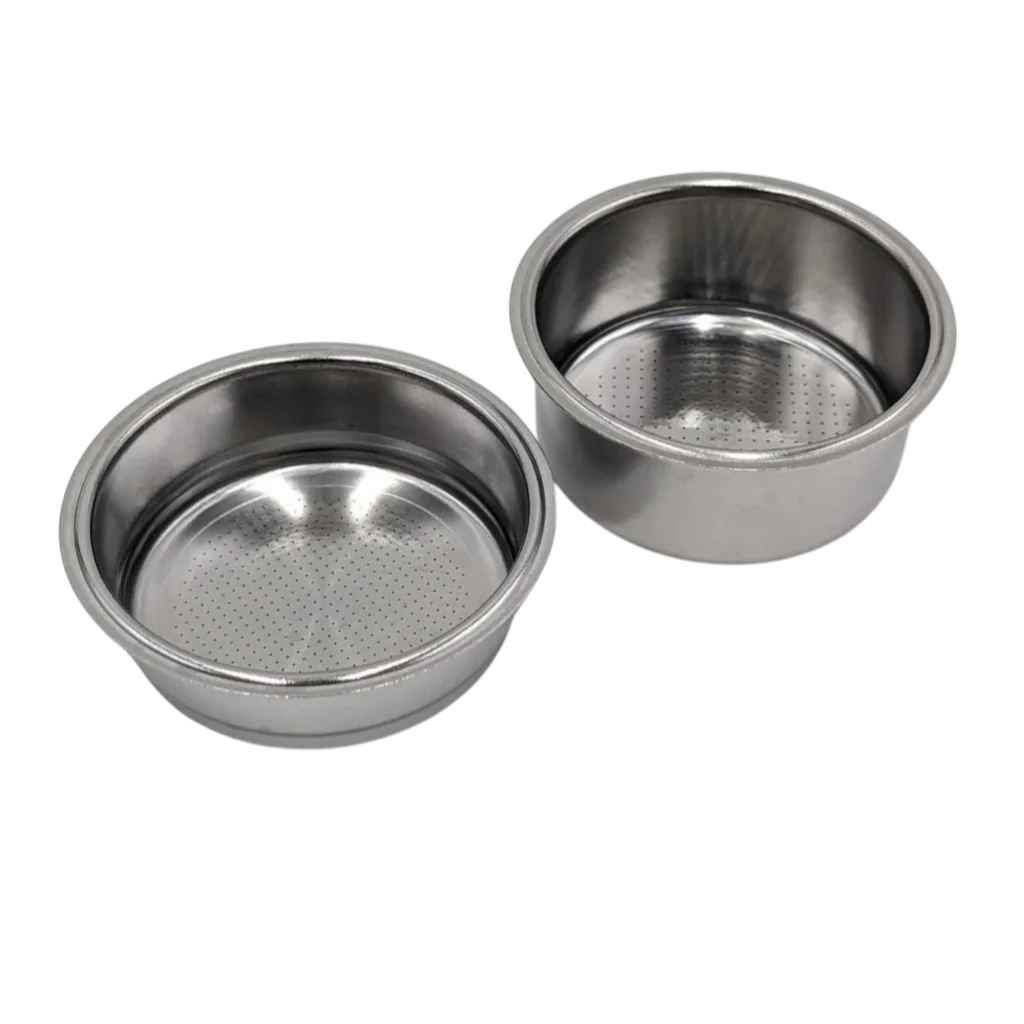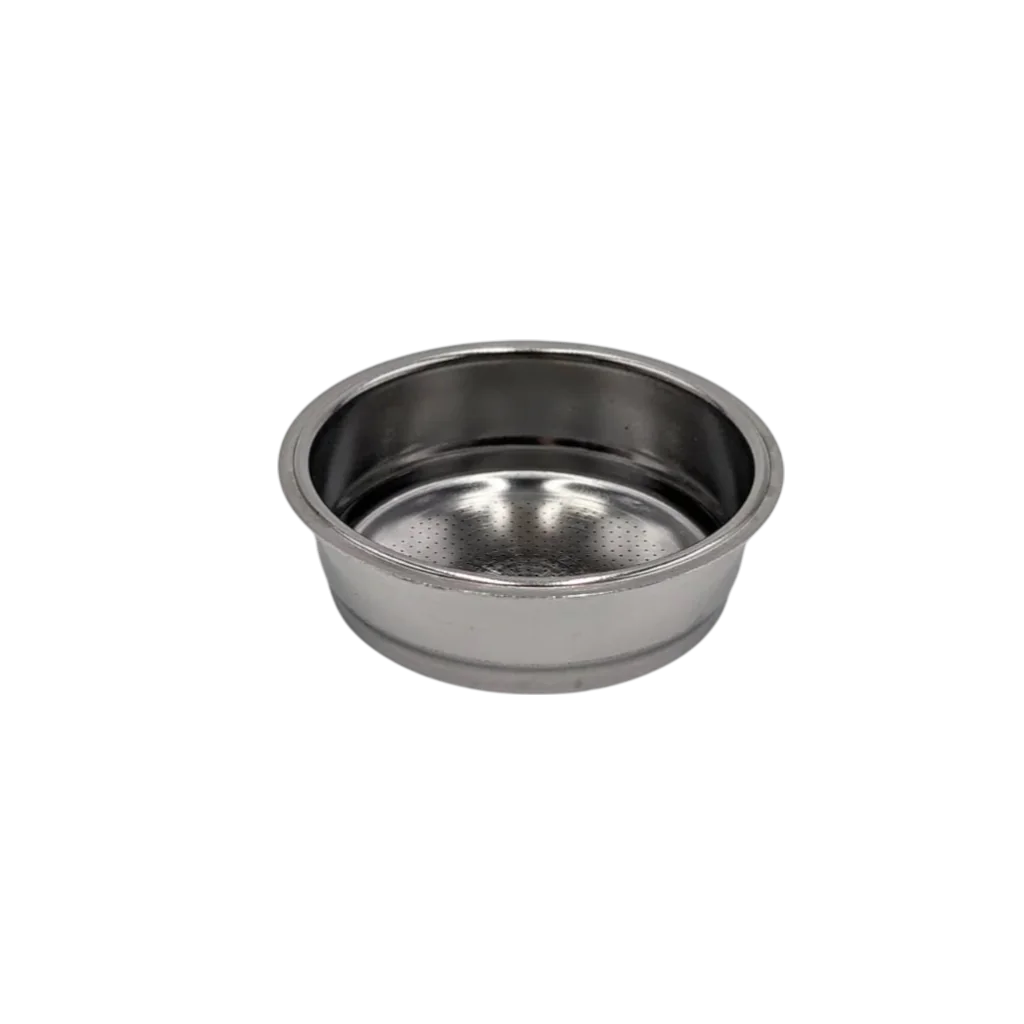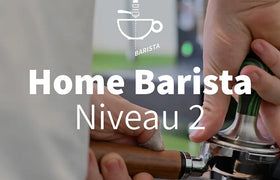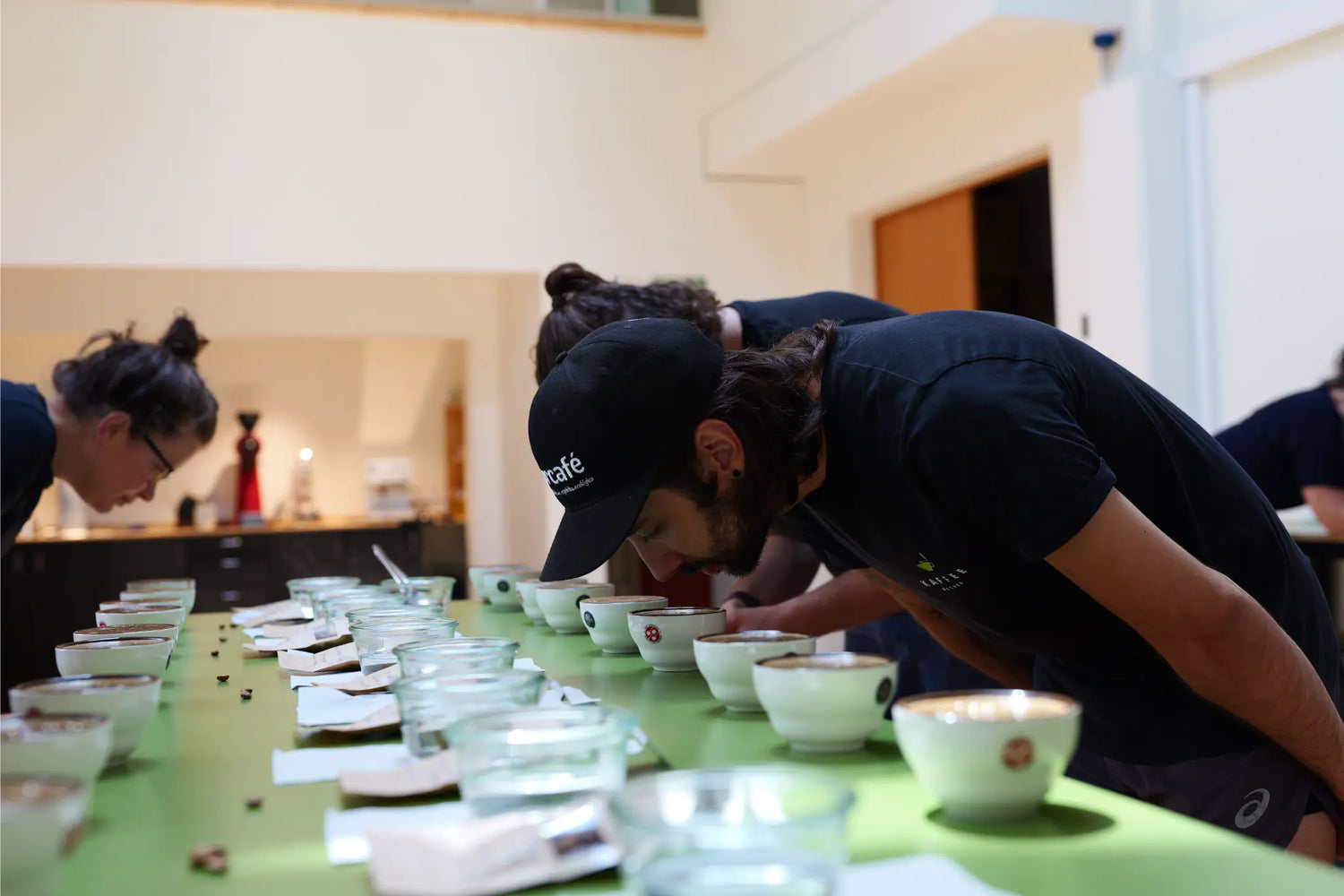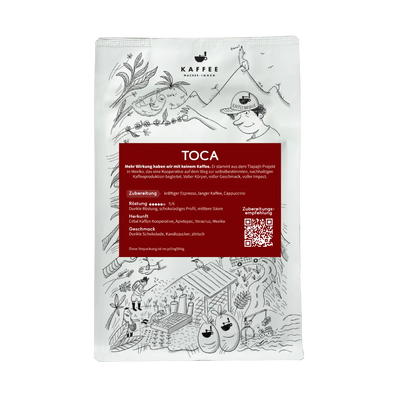Coffee tasting, or cupping, plays an important role in the world of coffee. In the countries of origin (exporting countries), i.e., where the coffee is grown, this is how the quality of the product is checked. In the importing countries, we as consumers, buyers use cupping to check whether the delivered quality matches the order. Roasters use cupping to determine which beverage they want to roast the coffee for. And at home, we can use it to find out whether we like the coffee.
This article explains how you can taste coffee at home and explains the importance and application of cupping. What is cupping?
What is cupping?
Cupping is the method used to taste green coffee. A coffee sample is roasted and ground according to a specified standard, and then tasted by sipping the coffee. This standardized process allows for objective evaluation and comparison of coffee.
Ten different attributes are examined, each of which can achieve a total of 10 points, for a total of 100 points. In addition to aroma and flavor, acidity, body , finish, balance, and overall impression are also evaluated. Sweetness, uniformity, and purity round out the other attributes evaluated.
A new assessment form will be introduced starting in October 2025. We have discussed and analyzed the Coffee Value Assessment, or CVA for short, in detail here .

Simple step-by-step cupping instructions
In a nutshell, for home or business, here are the basics of cupping. This way, you can easily taste like a pro. Tip: Read the entire instructions once before you begin.
Your preparation
Foreign odors impair sensory perception.
If you want to analyze coffee (or wine and beer) sensorially, make sure there are no extraneous odors in the room. After all, the scent of roses, linden blossoms, and jasmine should come from your coffee, not your perfume.
What you need:
- 1x mill
- 1x cupping spoon or tablespoon
- 1x cup or glass 200ml (if smaller or larger, maintain brewing ratio)
- 1x cup or glass to clean the spoon (size doesn't matter)
- 1x kettle
- 200ml soft water (e.g. Volvic, Black Forest)
- 12g coffee (or brewing ratio 1:16.66 = 6g coffee to 100g water)
- Paper and pen
- stopwatch
The 1x1 of cupping - short and sweet
- Grind the coffee polenta-fine (700-1000 microns)
- Smell the dry powder
- Heat water to 93-96°
- Start the stopwatch and pour water over the coffee to the brim, moistening all the coffee
- Smell the crust
- Break the crust after 4 minutes
- Skim off floating particles without stirring up sunken coffee
- Coffee tasting (see below)
- Capturing impressions - why do I recognize the coffee?
- Cleaning: Pour coffee grounds through a fine sieve instead of down the drain, and enjoy the rest. Use coffee grounds as fertilizer for plants.
Always clean the spoon with water between each step.
The individual cupping steps explained in detail
Notes
During a cupping session, it's essential to record what you taste. This can be done using an official SCA score sheet, in your personal notebook, or with a cupping app. It's important that your notes allow you to recognize the coffee. On a professional level, the whole process is done objectively. At home, you're welcome to incorporate your subjectivity; after all, it's about whether you like the coffee or not. But here, too, make a note of what you particularly like about it.

SCA Arabica Cupping Form
Number of cups
For a professional tasting, five cups of coffee are individually brewed. The coffee is individually weighed and ground for each cup. This allows any defects or flaws in the coffee to be identified and noted. The coffee is checked for uniformity. If only one cup were brewed, it would be impossible to determine whether the supposed off-odor is actually an off-odor or whether the entire coffee smells the same and may be of inferior quality.
Brew Ratio
For 12g of coffee, we use 200ml of water. If you use a smaller or larger cup or glass, make sure you maintain the brewing ratio. For 150ml of water, use 9g of coffee (1:16.6). By the way, our brew ratio does not comply with the specifications and standards of the Specialty Coffee Association. This specifies a brewing ratio of 8.25g to 150ml, or 1:18. We like to taste a little stronger, as this allows us to better reveal the attributes, and our preferred brewing ratio for filter coffee is also 1:16.66.
Grind
Grind your coffee to polenta-fine (700-1000 microns). You can also use a hand grinder for this. Clean the grinder with a few coffee beans to eliminate any residue before grinding the 12 grams for the cup.
Dry powder
Pour the coffee grounds into your container. Smell the dry grounds and note your impressions. What aromas can you detect?
Water
We've published a detailed video on our YouTube channel about the perfect water for coffee. We recommend a water hardness of 2-3 German hardness and a corresponding alkalinity of 1-2 German hardness. Not sure if your water is suitable? Here 's how to test your water at home.
Heat the water to 93-96°C. Pour the water over the coffee grounds and start the stopwatch. Fill to the brim, making sure all the grounds are coated.
Smell crust
Smell the forming crust. Does your nose confirm your impressions? Do you detect any other aromas?
Break the crust
After 4 minutes, slowly break the crust with your spoon by pushing the particles from front to back. Don't stir, just push them back. Repeat this 3 times. Breaking the crust releases the volatile aromas. These dissipate quickly, so the aroma assessment must be done immediately.
Skimming
Now, with your spoon, you can skim off the particles floating on the surface. These affect the tactile sensation and are also bitter.
Slurping
After another 4-5 minutes, you take your first sip. As with wine tasting, we try to add air during cupping so that we can also perceive the retronasal aromas. This way, we get the full bouquet and the entire flavor profile.
With the first sip, we analyze the flavor and get a first impression of body and acidity. During the second sip, we pay attention to the aftertaste, the balance—the equilibrium between the other attributes. With the third sip, we pay attention to the consistency of the coffee (did it get better/worse/more intense as it cooled?) and evaluate the overall impression.
Why do we taste coffee?
Cupping is the method for sensory analysis of green coffee and assessing its potential as a roasted coffee. Depending on the growing region, variety, harvesting process, post-harvest process, and the interests of the producer, the coffee tastes completely different. Different parties along the value chain therefore have different reasons for rigorously testing the green coffee.
The producers
Cupping is how producers check their work. Just as winemakers continually check the quality of their wines during maturation, coffee producers do the same – albeit at the very end of the entire process. At the end of a long journey from blossoming to processing to green coffee is cupping – and it decides whether a coffee is a hit or a flop. All the work on the coffee farm is reflected in just a few cups and a single sip, showing producers whether their efforts will pay off. Based on the cupping and the resulting sensory impression, the producer can now bring their coffee to market. And they already know for next year which steps they can optimize, or whether adjustments made this year have already proven successful.
Note: Many coffee producers don't taste their coffee. Small producers, in particular, have often never tasted their coffee the way it is tasted by traders, roasters, or consumers. Access to training and equipment is lacking. As a result, many coffee producers lack the important prerequisites for knowing the value of their coffee and offering it appropriately on the market.
The dealers
Traders deal in green coffee. They are the linchpin of the coffee industry, whether on a small or large scale. However, more and more roasters and producers are trying to bypass the middlemen and buy or sell their green coffee as directly as possible. This is not as easy as it seems at first glance. Those who buy green coffee are often the intermediaries between the producers and the roasters. The interest in tasting lies in selling the desired taste profile and quality to the buyer. For modern traders, it's no longer just about quality, but also about the sustainability aspects surrounding people and animals that are linked to coffee production. After all, coffee brings with it a lot of baggage from past and present times.
The roasteries
With their profile, roasteries lay the crucial foundation for whether their customers share their philosophy and taste preferences, and whether, based on their personal requirements, they will shop with them precisely for that reason. Based on the cupping process, the roaster decides which coffees they want to use for their final products and what the characteristics of each roasted coffee should be. If an elegant espresso with delicate acidity and notes of honey, caramel, and citrus fruits is desired, the team selects a suitable green coffee. Finding the green coffees that suit your taste and ideal is arguably one of the greatest challenges for a modern roaster.
The consumers
Ideally, we drink coffee that blows us away. But how do you find out which coffee you like best? Do you prefer subtle aromas or funky flavors? Which post-harvest process appeals to you most? Which flavor do you enjoy most at which time of year? Can you even smell, taste, and feel a difference between the different varieties and countries? Let's be clear: yes, you will. Consumers can also find out which flavor suits them best through cupping.
Q-Grader - the licensed coffee taster
A Q-grader is someone who has successfully passed 21 sensory tests and is thus awarded a three-year license as a certified coffee taster. While this is a term few people know about here, it is a respected profession in certain coffee-producing countries, such as Honduras, earning far more than, say, a teacher. After the three-year period, this license must be renewed. The license is obtained for either Arabica or Robusta.
You can find more information about the Q-Grader, including a video from Michel and Philipp, here . At Kaffeemacher:s, David, Michel, Benjamin, Philipp, and Nadja are trained Q-Graders, with Benjamin and Nadja owning both the Arabica and Robusta Q-Graders.
Would you like to participate in our next online cupping?
Register here if you would like to be informed about future cuppings.
Further topics related to sensor technology
Learn more about cupping and tasting: Sensory Course
Buy test kits for water hardness determination in CH
Buy test kits for water hardness determination in Germany
The influence of coffee processing methods on taste



